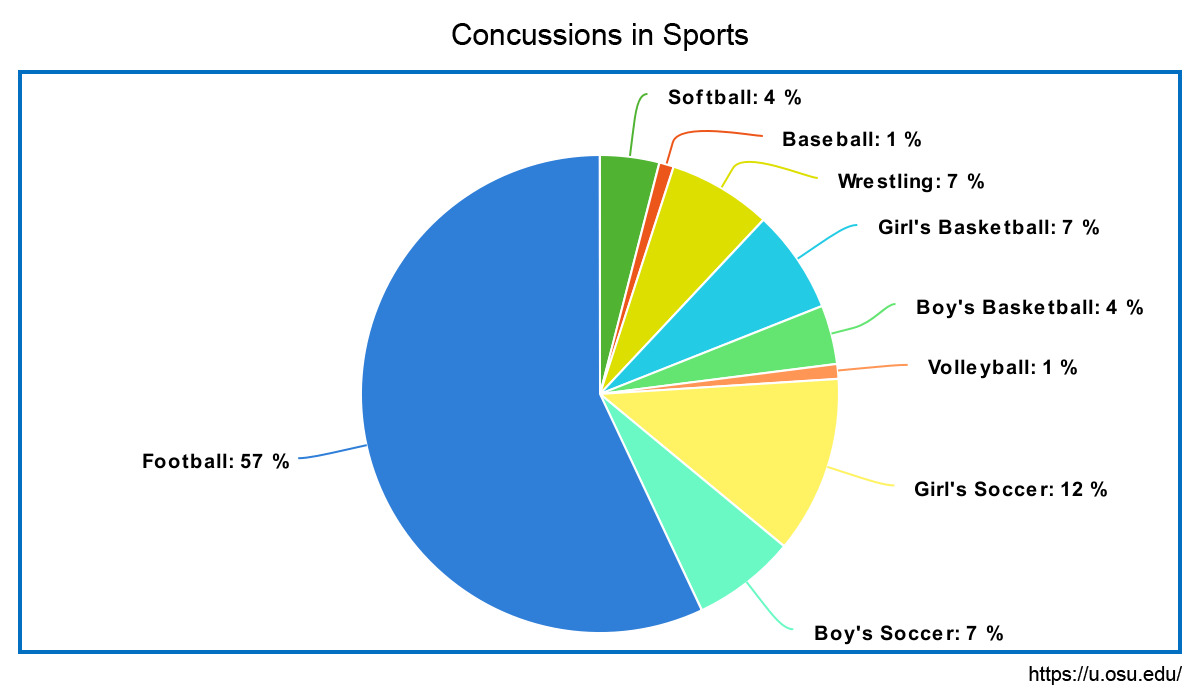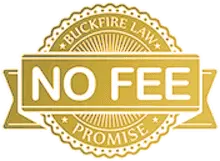Our youth sport concussion lawyers help athletic participants who suffered traumatic brain injuries. While there is a risk of head injury in most sporting activities, it is the responsibility of the league, team, and coach to take proper protocol after a suspected concussion.
The failure to take this required action can lead to serious harm and give rise to a civil lawsuit.
Brain injuries in youth sports and the prevalence of sports-related concussions among youth athletes have become significant public health concerns. These issues have been addressed by various state legislatures, as well as regional athletic bodies and school districts.
- Concussion Protocols in States and Cities
- Sports-Related Concussion Statistics
- Common Symptoms of a Sports Concussion
- Serious Consequences of Youth Concussions
- Can I Sue if My Child Suffered a Sports Concussion Injury?
- Concussion Cases Across the Country
- What Types of Compensation Can be Claimed?
- Settlements or Jury Verdicts for Youth Sports-Related Concussion Lawsuits
- How much time is there to file a lawsuit?
In recent years, researchers have focused efforts on understanding the long-term effects of concussions, and the ways in which sports-related concussions are potentially linked to degenerative brain diseases such as chronic traumatic encephalopathy (CTE).
In response to concerns about the lasting effects of sports-related concussions, states enacted laws designed to reduce the rate of concussions in youth sports and to ensure that youth athletes are provided with sufficient time away from play to recover from a head injury.
Across the country, individual school districts, counties, and other organizations have developed their own concussion protocols to keep children and teen athletes safe and to limit liability.
Despite the fact that most U.S. states have at least some laws concerning sports-related concussions and youth athletes, young contact sport players continue to suffer traumatic brain injuries (TBIs) and to discover that they are experiencing long-term effects from concussions.
If your child sustained a concussion while playing sports, it is important to learn more about options for filing a claim against the coach, the trainer, the school district, or another entity that may be liable for your child’s debilitating injury. In the meantime, we want to provide you with more information about sports-related brain injuries in children and teens, and youth sport concussion lawsuits.
If you have questions, our experienced youth sport concussions lawyers will assess your case and determine whether you have a valid claim. You and your child may be able to sue a league or organization for the injury. We handle personal injury cases throughout the entire United States.
Concussion Protocols in States and Cities
Nearly all U.S. states currently have laws in place concerning sports-related concussions in youth athletes and concussion protocols. In addition to the laws developed by state legislatures, many school districts across the country also have sports concussion policies and concussion management plans that coaches, trainers, and anyone else who works in youth sports within the school system must follow closely to avoid youth athlete injuries.
Many cities also have concussion policies in place for youth athletes. For example, the City of Somerville has its own parks and recreation concussion policy, which is relatively common in cities throughout the U.S.
In addition to statewide policies, school district policies, and city policies, a number of sports organizations also have their own concussion protocols. For example, the National Council on Youth Sports Safety (NCYSS) makes its own recommendations about concussion protocols to keep kids safe when they are playing contact sports.
When states have state-wide concussion laws (as most do), organizations and entities within the state must abide by the concussion protocols, policies, and requirements outlined by state law. Cities, school districts, and sports organizations can go above state law by providing more protections for youth athletes when it comes to concussion protocols, but they cannot require less than the state requires.
Washington State was the first state to put a concussion law in place in 2009, known as the Zackery Lystedt Law. Since then, nearly all states have passed similar legislation.
The following information provides brief examples of some of the concussion protocols from a few states across the country:
• Alabama: Requires school districts to develop concussion guidelines, for sports and recreational organizations to provide annual training to coaches on concussion recognition and treatment, to have parents and youth athletes sign a concussion and head injury information sheet, and to immediately remove an athlete from play if that athlete is suspected to have sustained a concussion.
• California: Students in private, public, and charter schools must have limited full-contact practices, youth athletes must immediately be removed from play if there is a risk of concussion, “return to play” protocols must be followed precisely to ensure that a youth athlete does not return to play too quickly before a full recovery from a concussion, youth athletes with diagnosed concussions cannot return to play without medical clearance, and students and parents might sign and return a TBI information sheet in order for the youth athlete to be involved in sports.
• Washington: In Washington, the Zackery Lystedt Law was the first of its kind to require concussion protocols in youth sports. The Zackery Lystedt Law requires school districts to develop concussion protocol guidelines and educational programs to inform about youth concussion risks, to have mandatory consent from youth athletes and their parents to play with knowledge of concussion risks, immediate removal from the game when a concussion is suspected and written medical clearance to return to play.
To sum up, many of the state laws in existence look similar to one another, requiring one or more of the following elements:
- Schools must develop concussion guidelines, protocols, and/or educational programs for athletes, coaches, and families;
- Informed consent (recognition of concussion risks) from the youth athlete and his or her parents in order for the athlete to play sports;
- Sports-related concussion training for school and sports organization coaches and trainers;
- Mandatory removal from the game when there is a possible concussion;
- Return-to-play protocols to ensure the youth athlete’s full recovery before returning to the field;
- Required medical clearance for a youth athlete to return to play; and
- Limits on full-contact sports practices.
Sports-Related Concussion Statistics
What should you know about youth sports-related concussions? The following statistics are collated from the U.S. Centers for Disease Control and Prevention (CDC), the National Council on Youth Sports Safety (NCYSS), the University of Pittsburgh Schools of the Health Sciences, and Brainline.org:
- More than 200,000 youth athletes sustain concussions every year;
- Youth sports concussions occur most frequently in high school sports settings;
- While football is currently identified as the sport in which concussions are most common, researchers believe that concussions may be underreported and prevalent in girls’ sports, particularly in basketball and soccer;
- New research estimates suggest that girls soccer is the sport with the second-highest rate of concussions in all high school sports, just after high school football;
- About 15% of all students report that they have sustained at least one concussion during the past year, a number that comes out to approximately 2.5 million students per year;
- Of the students who self-report sustaining concussions in the previous 12 months, about 6% of those students (or approximately 1 million students) say they have sustained two or more concussions in the last year alone;
- Nearly 70% of youth athletes report that they have continued to play sports while experiencing concussion systems;
- As many as 40% of youth athletes have continued to play with signs of a concussion while reporting that they did not believe the coach was aware that they had sustained a possible concussion;
- As many as 50% of all sports-related concussions are never reported or never detected; and
- In any given year, about 20% of high school athletes who play a contact sport will sustain a sports-related concussion.
Which sports are most likely to result in a youth concussion? While nearly any sport ultimately can lead to an athlete sustaining a head injury, contact sports are more likely than others to produce sports-related concussions. According to Brainline.org, the following are the sports in which concussions are most commonly reported in children and teens:
- Football
- Hockey
- Rugby
- Soccer
- Basketball
- Lacrosse
- Bicycling
- Cheerleading
- Horseback riding
The highest rate of youth concussions occurs in football, hockey, rugby, soccer, and basketball. However, it is critical to remember that concussions can occur in nearly any sport, and state concussion protocol laws apply to youth athletes regardless of whether they are playing one of the sports more commonly associated with concussions.
According to a study done by the Sports Concussion Clinic, a Division of Sports Medicine at Children’s Hospital Boston, football accounts for more than half of concussions in high school athletes.

Common Symptoms of a Sports Concussion
When a child gets hit on the head with a ball or there is forcible contact with another player or object, there are important signs and symptoms that suggest a concussion. These include:
- Confusion
- Forgetfulness
- Nausea
- Glassy eyes
- Disorientation
- Clumsiness
- Balance problems
- Slowed or altered speech
- Changes in mood, behavior, or personality
Many of these symptoms are subtle, which is why concussion training is so important for parents, coaches, and trainers. The failure to remove a participant from an event with these symptoms can lead to additional impacts that cause irreversible damage.
There must be proper protocol and procedures to follow before a child is permitted to return to a game. The failure to implement and follow these requirements can give rise to a lawsuit.
Serious Consequences of Youth Concussions
Many people wrongly assume that concussions will not have long-term effects on children and teenagers since they often recover more quickly from other kinds of contact injuries. However, it is critical to understand that concussions, which are a mild form of TBI, can indeed have serious consequences. Those consequences can be both immediate and long-term.
According to the Mayo Clinic, the following are some of the serious potential consequences a child or teen athlete can face after sustaining a single or a subsequent concussion:
- School-related activities such as reading can cause serious headaches;
- Exercise and movement, such as jogging, can result in a debilitating headache that requires the child to rest;
- Completing cognitive activities, such as thinking and speaking, can take significantly more time and can require more energy;
- Youth athlete can develop post-concussion syndrome, which the Mayo Clinic describes as “a complex disorder of concussion symptoms that last longer than a normal recovery period (such as headache, dizziness, fatigue, irritability, problems with memory, problems with attention and focus, and difficulty thinking);
- Sustaining a single concussion in childhood or during teen years puts that child or teen at greater risk of sustaining another concussion, and multiple concussions are linked particularly with long-term degenerative brain diseases; and
- The child can develop dementia, or a degenerative brain disease such as chronic traumatic encephalopathy (CTE), later in life as a result of sustaining one or more concussions.
The Mayo Clinic emphasizes that the severity of a concussion does not necessarily correspond with a child’s likelihood of experiencing post-concussion syndrome, and the severity of the TBI does not correspond with the child’s risk of sustaining a subsequent concussion.
Even concussions in which the child does not lose consciousness or experiences relatively few of the common symptoms associated with these traumatic brain injuries can have debilitating consequences and should be taken seriously.
Can I Sue if My Child Suffered a Sports Concussion Injury?
If your child sustains a sports-related concussion, who can be liable for the injury?
The answer to that question will depend upon a number of factors, including:
- the state in which your child sustained a sports-related concussion
- whether the specific city, school district or organization had a concussion protocol in place that provides greater protections than state law
- the person or coach who was responsible for overseeing the concussion protocol and ensuring that it was followed.
Generally speaking, any of the following parties may be liable for your child’s sports-related concussion, and in some cases, it may be possible to file a lawsuit against more than one party:
- Coach;
- Trainer;
- School;
- School district; and/or
- Healthcare provider.
It is critical to have a sports concussion lawyer assess the particular facts of your case to determine potential liability. While many youth sports concussion claims have similarities, it can be difficult to say for certain who may be liable until your lawyer considers the facts of your case in relation to state law and any existing concussion protocols.
The actions of the potentially liable party will also be essential to investigate in order to determine whether that party was negligent. Most youth sports-related concussion claims rely on a theory of negligence, but you should discuss other potential theories of liability with a personal injury attorney.
Concussion Cases Across the Country
Families across the country are filing youth sports-related concussion lawsuits against various parties for failing to prevent youth concussions, as discussed above. The following are some examples of recently filed or decided cases from different regions of the U.S.:
• In the Michigan case Randall v. Michigan High School Athletics Association (2020), which was a case of consolidated appeals concerning Michigan’s concussion statute (MCL 333.9156). In this case, the plaintiff, a youth hockey player, filed a lawsuit against his coach, his trainer, and other institutional entities. In his case, he argued that his coach, his trainer, and other parties “failed to remove him from a youth hockey game after he showed obvious signs of a concussion.”
The Michigan Courts of Appeals was tasked with clarifying the application of the state’s concussion protocol law and the duties imposed on coaches, trainers, and others by the Michigan state legislature. The court ultimately ruled that, in enacting the concussion-protocol statute, the Michigan state legislature “did not create, explicitly or by implication, a private statutory cause of action for violation of the statute.” Instead, the court explained, “the statute creates negligence-based duties on the part of coaches and other covered adults, and a violation of the statute can be evidence of actionable negligence.”
• In the California case Mehr v. Federation Internationale De Football Association (2015), youth soccer players sued the Federation Internationale De Football Association (FIFA), the U.S. Soccer Federation, the California Youth Soccer Association, and U.S. Club Soccer for their failure to adopt rules and to enforce rules that would prevent youth concussions in the sport. Although the court ultimately dismissed the case in the defendants’ favor because the court could not establish jurisdiction over FIFA in California, the court left open the possibility that the claim could have merit if standing and jurisdiction were not at issue.
• According to a recent report in The San Diego Union-Tribune, the mother of a high school cheerleader has filed a lawsuit against a California school district alleging that “coaches failed to follow safety protocols,” and as such, they “put the girl at risk by waiting nearly an hour to call her parents” following a likely concussion injury. The lawsuit claims that the traumatic brain injury was “so severe that the effects of the concussion are still ongoing,” and the parents report that their daughter “has never been the same since” the concussion injury. The mother is seeking $25,000 in economic damages to cover medical expenses, in addition to legal fees and general damages.
• A recent article in the Phoenix Business Journal reports that a former youth linebacker’s father has filed a lawsuit against Arizona State University and the NCAA, “alleging that flawed concussion management and protocols were a direct result of his son contracting the degenerative brain disease called CTE.” The lawsuit specifically states that both defendants “recklessly ignored these facts and failed to implement reasonable concussion management protocols to protect its athletes.” The former youth linebacker, Jason Franklin, sustained four concussions as a practice-squad player at ASU and later committed suicide.
What Types of Compensation Can be Claimed?
Lawsuits demand both economic losses and non-economic losses. An injury victim can be awarded a combination of both types of damages in a case.
Non-economic compensatory damages include settlement money for pain and suffering, mental anguish, disability, and other losses. A permanent brain injury will impact the child socially and have a serious and lasting impact on the ability to lead a normal life.
Economic damages are essentially financial losses. Cases demand settlements for medical bills incurred through the present date and into the future. An injured athlete may require cognitive therapy and other treatment for a lengthy period. This may not be covered by health insurance and is extremely costly to the parents who are responsible for paying the bills.
In addition, the child may require special tutoring and education. In addition, a permanent injury can cause a loss of future earnings or earning capacity over a lifetime. An economist is often used to project these losses for the child. Both of these are compensable damages in a lawsuit.
Settlements or Jury Verdicts for Youth Sports-Related Concussion Lawsuits
Some youth sports-related concussion lawsuits have resulted in substantial settlements or jury verdicts. Examples of some of those cases include the following:
- In 2018, according to an article in Athletic Business, a former high school football player in California was awarded $7.1 million in a concussion lawsuit. The concussion lawsuit was based on a delayed diagnosis of the concussion and continued play after the head injury, which resulted in the concussion worsening.
As the article explains, the former high school athlete, Rashaun Council, “will never be able to drive or live by himself because of his on-field injury and the failure of his school’s coaching and medical staff to diagnose his condition.” According to the lawsuit, the coach and the medical staff “continued to play him ‘cause they wanted to win this game.”
The concussion occurred in 2013 when Council was a freshman. He was 14-years-old and reported that he was “feeling sick and confused” after a blow to the head on the field. One of Council’s teammates informed the coach, but the coach left Council on the field to finish the game.
After the game, reports indicated that Council “was vomiting in the locker room . . . but coaches did not call 911 or follow property concussion protocol.” His father took him to the emergency room where he required emergency surgery and was put in a medically induced coma.
- The NCAA is facing more than 300 football concussion lawsuits, according to a report from the Associated Press, after it recently settled prior cases for $75 million.
Former youth players filed claims in which they alleged that “their concussions were mistreated, leading to medical problems spanning from headaches and depression and, in some cases, early-onset Parkinson’s or Alzheimer’s disease.”
The previous $74 million settlement included $70 million for medical monitoring for former youth athletes, $5 million in medical research, and $5,000 for individual players who alleged injuries.
How Much Time is there to File a Lawsuit?
The answer to this question depends upon a few factors. First, every state has its own statute of limitations or deadline for filing a case. Most cases are filed in the state where the injury occurred, but some cases may be filed against an organization located in a different state.
Second, the time deadline can vary based upon the specific type of claim and party being sued in the case. For example, a claim for general negligence against a recreational league coach might be three years limit. However, a case in the same state against a governmental employee, like a school coach or gym teacher, may only be two years.
In addition, there could be possible claims filed against negligent healthcare providers who failed to accurately diagnose a concussion, or negligently cleared a student-athlete with a concussion to return to play. This type of claim is often classified as medical malpractice and the time deadlines for medical negligence lawsuits are often shorter than other cases.
Finally, many states allow for extended times to file lawsuits if the injured person is a minor at the time of the incident. This often extends to the child’s 19th birthday even if the child suffered a concussion ten years earlier. An experienced lawyer will research this issue for you.
Contact a Youth Sports Concussion Injury Lawyer for Assistance
Concussions in youth athletes can have long-term, devastating consequences. Brain injury studies suggest that even a single concussion can have long-term consequences, while multiple concussions, even when sustained in a person’s youth, can result in debilitating and degenerative diseases later in that person’s life.
An experienced sports-related concussion attorney at our law firm will analyze your case and explain your options for filing a lawsuit. Contact the Buckfire Law Firm to learn more about how we can help your family with a youth TBI lawsuit.
(Main)
- 28411 Northwestern Highway
Suite 300
Southfield, MI 48034
- Phone: (248) 595-7544
- 19 Clifford St.
Suite 805 Merchants Row
Detroit, MI 48226
- Phone: (313) 992-8281
(Woodward Address)
- 1001 Woodward Ave.
Suite 505
Detroit, MI 48226
- Phone: (313) 777-8482
- 343 S. Main Street
#206
Ann Arbor, MI 48104
- Phone: (734) 888-3003
- 51424 Van Dyke Ave
#3
Shelby Township, MI 48316
- Phone: (586) 250-2626
- 432 N. Saginaw Street
Suite 413
Flint, MI 48502
- Phone: (810) 818-8182









